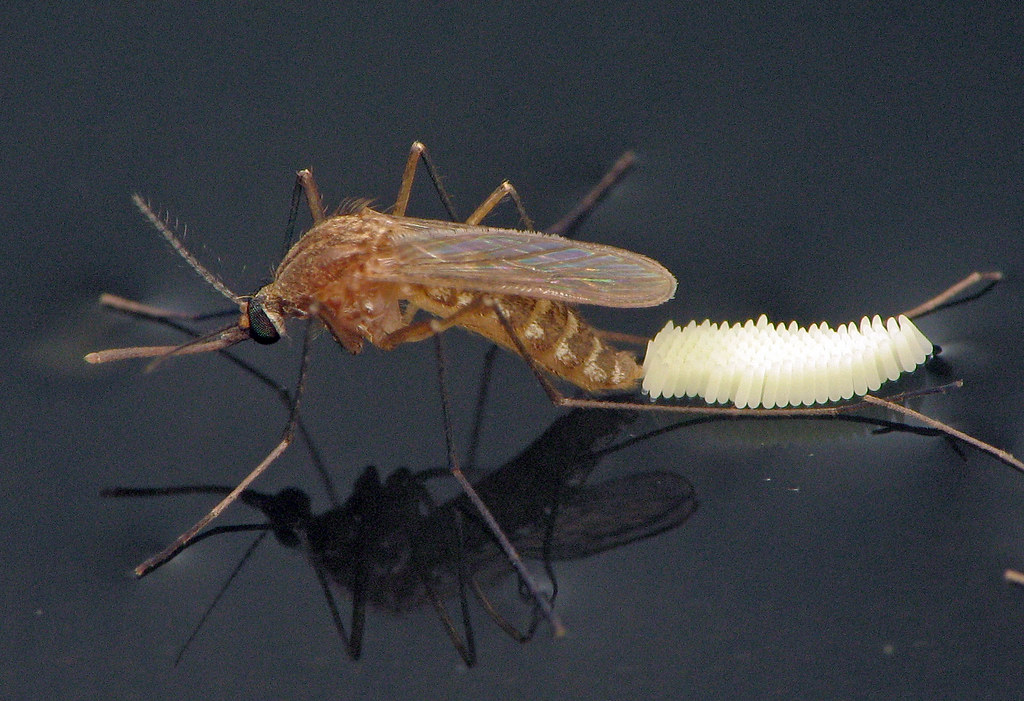
In the diverse and fascinating world of insects, reproduction methods vary tremendously across species. While many familiar insects like butterflies and ants have relatively straightforward egg-laying processes, others have evolved truly extraordinary reproductive strategies that defy expectations. From eggs that can survive extreme conditions to parasitic reproduction and bizarre parental care behaviors, the world of insect reproduction showcases nature’s incredible creativity. This article presents the most unusual and remarkable egg-laying processes found in the insect world, highlighting extraordinary adaptations that evolved to support species survival in challenging environments.
The Bizarre World of Gall Wasps’ Reproductive Manipulation
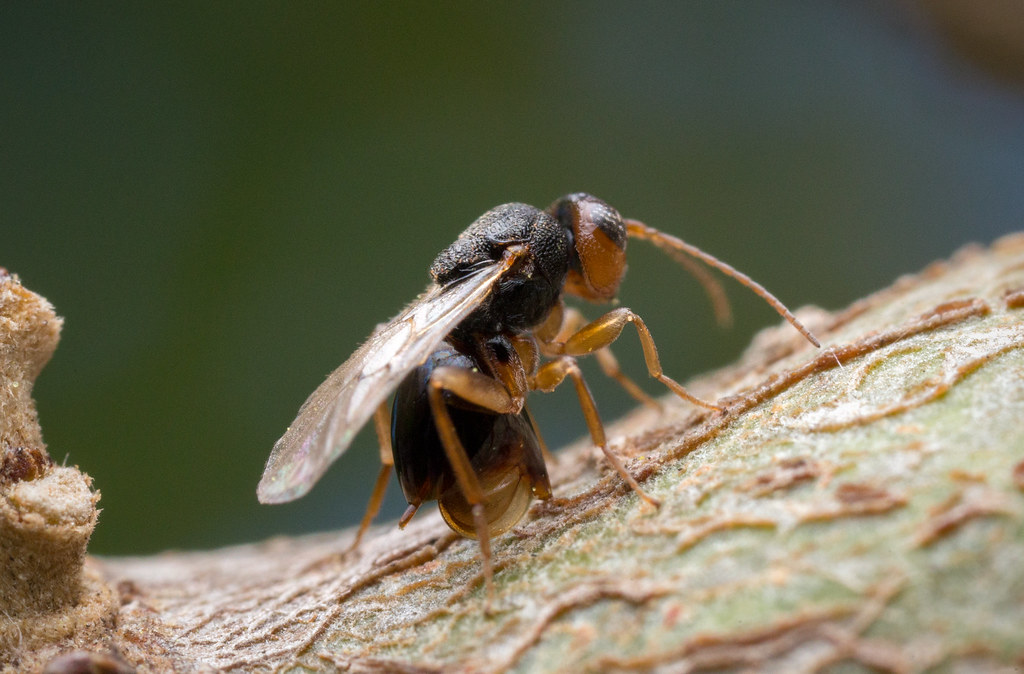
Gall wasps demonstrate one of the most sophisticated egg-laying processes in the insect world by reprogramming plant tissues. When laying eggs, a female gall wasp injects chemicals along with her eggs that hijack the plant’s growth mechanisms, forcing it to create a protective structure—the gall—around the developing larvae. These natural biochemical hackers reprogram plant DNA, creating custom-built nurseries of specific shapes and sizes depending on the wasp species. The larvae develop safely inside these plant tumors, feeding on specialized nutritive tissues that the plant is forced to produce. Different gall wasp species create distinctively shaped galls, from simple swellings to elaborate structures resembling fruits, flowers, or even miniature sculptures, showcasing the precision of this evolutionary manipulation.
Strepsiptera: The Reverse-Birth Parasites
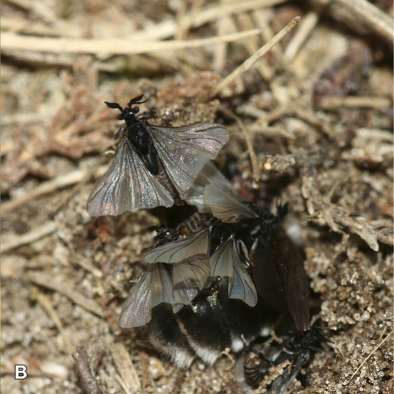
Twisted-wing parasites (Strepsiptera) exhibit one of the most unusual reproductive processes ever documented in insects. Female strepsipterans are almost completely endoparasitic, living their adult lives embedded within their hosts with only a small portion of their bodies exposed. In a process known as “neoteny,” females remain in a larva-like state and never develop wings, legs, or even external reproductive organs. The egg-laying process is essentially reversed—males mate with the exposed portion of the female’s body, and the resulting larvae develop inside the mother’s body. When ready, these first-instar larvae emerge from their mother’s brood canal in a process called “hypermetamorphosis,” being born alive rather than hatched from external eggs. These tiny larvae then disperse to find new hosts, creating an unusual life cycle where the mother becomes both incubator and first meal for her offspring.
The Hydrophobic Egg Strategy of Mosquitoes

Mosquitoes have evolved one of the most ingenious egg-laying strategies among insects, specifically adapted to aquatic environments while protecting against flooding. Female mosquitoes of many species construct remarkable “egg rafts” containing 100-400 eggs arranged in precise patterns that utilize the physics of surface tension. Each egg is equipped with a hydrophobic coating and is carefully positioned vertically with a specialized breathing apparatus at the water-facing end. The collective arrangement creates a structure that’s virtually unsinkable, with individual eggs locked together through microscopic interlocking mechanisms. Some mosquito species have evolved even more sophisticated strategies, laying drought-resistant eggs that can remain dormant for years in dry conditions, only to hatch when rains return—a reproductive insurance policy against unpredictable environments.
Bot Flies: Enlisting Unwilling Couriers

Bot flies have evolved perhaps one of the most devious egg delivery systems in the insect world through a process called “phoresy”—using other insects as unwitting transportation services. Rather than directly laying eggs on their mammalian hosts, female bot flies capture mosquitoes or other blood-feeding insects and glue their eggs to these “couriers.” When the mosquito later lands on a warm-blooded animal to feed, the bot fly eggs—sensing the heat and carbon dioxide from the potential host—rapidly hatch, and the larvae burrow into the host’s skin within seconds. This extraordinary reproductive strategy allows bot flies to bypass the challenge of approaching potentially dangerous hosts, while also ensuring precise placement of offspring on suitable targets. The human bot fly (Dermatobia hominis) has perfected this method, creating a complex parasitic relationship that involves three different organisms in its reproductive cycle.
The Exploding Eggs of Stick Insects
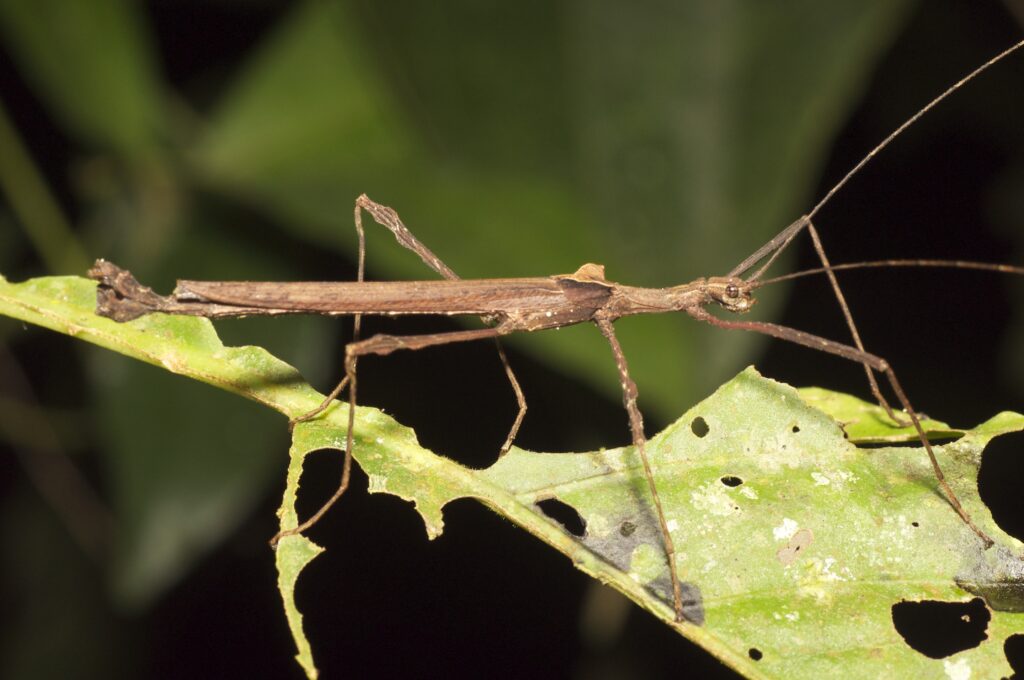
Stick insects have developed one of the most ballistic approaches to egg distribution found in any insect species. Unlike most insects that carefully place their eggs, many stick insect species literally fire their eggs away from their bodies in a process sometimes called “flicking oviposition.” The females contract specialized abdominal muscles to forcefully eject eggs at surprising velocities, sending them flying up to several feet away. This method serves multiple evolutionary purposes: it disperses offspring to reduce competition, helps avoid predators that might target egg clusters, and increases the chances some eggs will land in favorable microhabitats. Most remarkably, the eggs are structurally reinforced to withstand the impact forces of this delivery, with shock-absorbing structures and tough shells that protect the developing embryo during its aerial journey.
Horsehair Worms: The Aquatic Egg Strategists

While technically not insects but rather belonging to the phylum Nematomorpha, horsehair worms deserve mention for their exceptionally unusual reproductive strategy. Adult females lay up to 15 million microscopic eggs in water bodies, but their extraordinary approach to ensuring these eggs reach proper hosts involves multiple stages of transmission. The eggs hatch into larvae that encyst themselves within aquatic insects like mosquito larvae, essentially becoming dormant time bombs. These aquatic insects later metamorphose into adults that can leave the water, carrying the parasite cysts with them. When these insects are eaten by secondary hosts like crickets or mantids, the horsehair worm larva activates and develops inside, eventually manipulating the host’s behavior to seek water, where the mature worm dramatically emerges by breaking through the host’s body wall. This complex, multi-host reproductive strategy requires precise timing and host manipulation, making it one of the most elaborate egg-to-adult cycles in the invertebrate world.
Ensign Wasps and Their Cockroach Targets
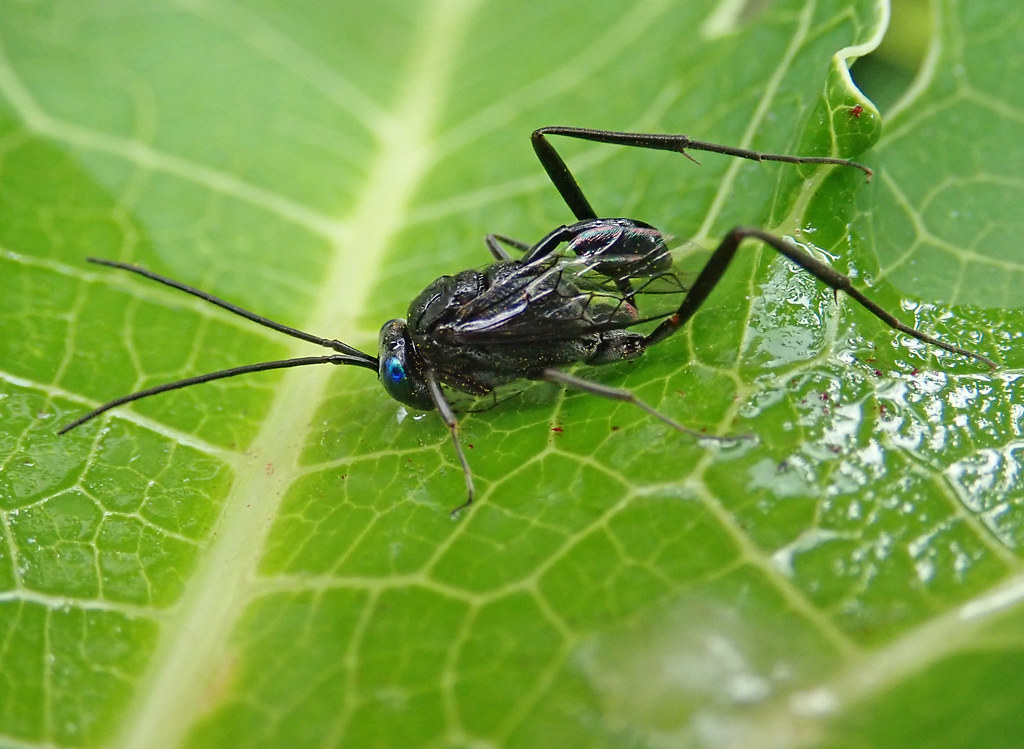
Ensign wasps (Evaniidae) have evolved a surgical precision in their egg-laying process that specifically targets cockroach egg cases. Female ensign wasps possess specialized sensory organs that can detect the chemical signatures of cockroach ootheca (egg cases) even when hidden in crevices or buried under material. Upon locating an ootheca, the wasp performs a remarkable feat of precision: she drills through the tough protective case with her ovipositor and deposits a single egg inside, often destroying some host eggs in the process. The wasp larva that hatches inside the protected environment of the cockroach egg case consumes all developing cockroach embryos before emerging as an adult wasp. What makes this process particularly unusual is the wasp’s ability to detect the exact age and condition of the cockroach egg case, selecting only those at the perfect developmental stage for their offspring’s needs.
The Deep-Diving Egg Strategy of Water Scorpions

Water scorpions (Nepidae) have developed one of the most unusual underwater egg-laying processes among aquatic insects. Unlike most aquatic insects that lay eggs on the water’s surface or attached to submerged vegetation, female water scorpions use their elongated respiratory tube (which normally functions as a snorkel) as a specialized ovipositor. The female inserts this tube into plant stems above the waterline and deposits eggs inside the plant tissue, with each egg featuring two or more thread-like respiratory filaments that extend outside the plant. These filaments function as breathing tubes for the developing embryos, allowing oxygen exchange while the eggs remain protected within plant tissue. This remarkable adaptation allows water scorpion eggs to develop safely away from aquatic predators while still maintaining the moisture requirements necessary for development, essentially creating a perfect microhabitat that balances protection with respiratory needs.
The Surgical Precision of Ichneumon Wasps
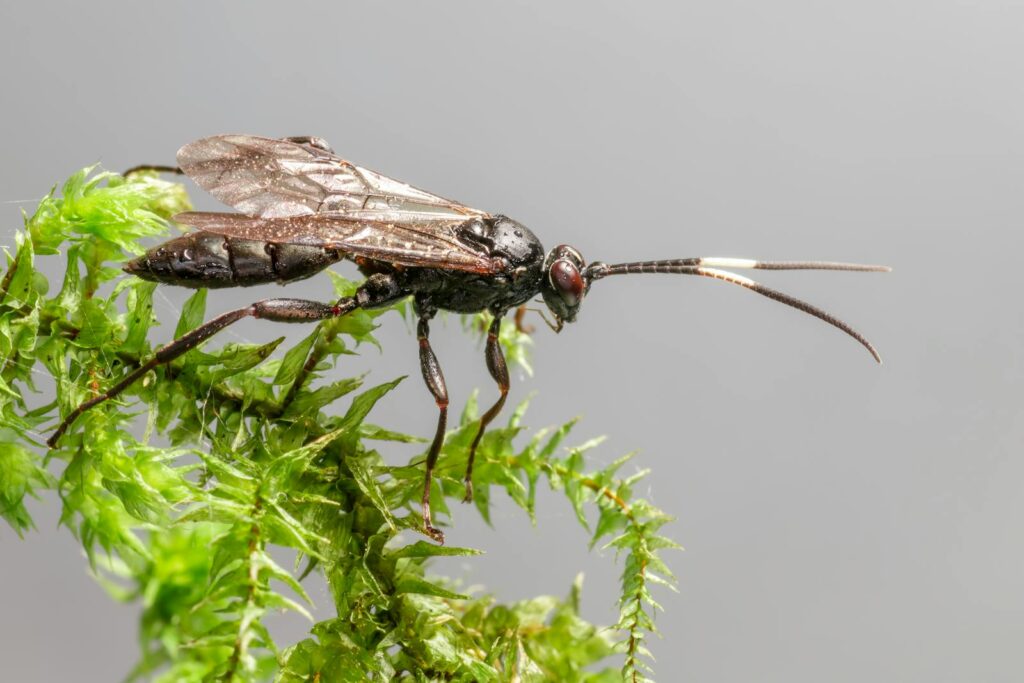
Ichneumon wasps have evolved one of the most surgically precise egg-laying processes in the insect world, with some species able to drill through solid wood to reach hidden hosts. Females possess extraordinarily long ovipositors—sometimes exceeding their body length by several times—that contain specialized mechanoreceptors and chemoreceptors to detect larvae hiding deep within plant tissue or wood. What makes their process truly remarkable is their ability to sense vibrations, carbon dioxide emissions, and even fungi associated with their target hosts through solid substrates. Upon locating a suitable host, the wasp performs a precise drilling operation, sometimes through several inches of wood, before injecting an egg directly into or onto the host larva. Some species can even temporarily paralyze the host with venom delivered through the same ovipositor, ensuring the host remains alive but immobile while the wasp larva develops as an external or internal parasite.
Human Bot Fly’s Hitchhiking Eggs

The human bot fly (Dermatobia hominis) employs one of the most sophisticated and unusual egg transportation systems in the insect world through forced cooperation with other species. Female bot flies capture day-flying mosquitoes and other blood-sucking insects, restraining them mid-air while gluing 15-30 eggs to their abdomens in a precise arrangement. These eggs remain dormant until the carrier insect lands on a warm-blooded host, at which point the eggs detect the heat and carbon dioxide signature and hatch within seconds. The emerging larvae immediately burrow into the host’s skin, creating a breathing hole while developing inside a warble (a subcutaneous cavity) for 5-10 weeks. This evolutionary strategy solves multiple problems simultaneously: it eliminates the risk of the relatively large bot fly approaching potentially defensive hosts, ensures precise delivery to appropriate host species, and times the hatching to the exact moment when successful parasitism is possible.
Mantidflies and Their Spider Egg Sac Infiltration
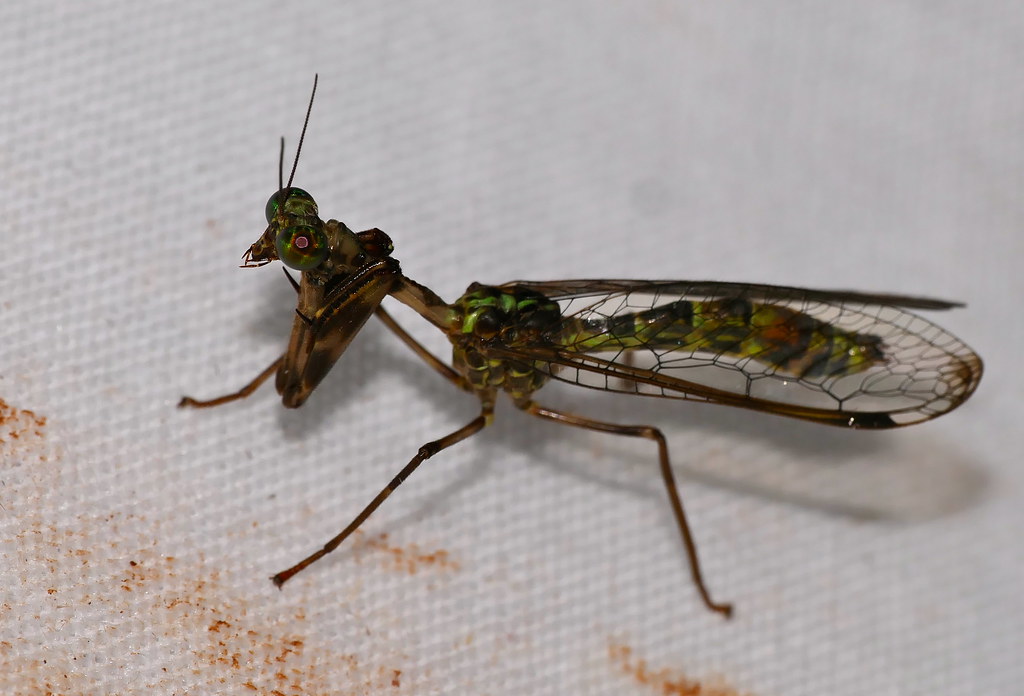
Mantidflies (Mantispidae) have developed one of the most methodical and deceptive egg-laying strategies among insects, specifically targeting spider egg sacs. Female mantidflies first lay hundreds of tiny eggs on stalks attached to vegetation, similar to their green lacewing relatives. When these eggs hatch, the first-instar larvae, called triungulins, actively hunt for female spiders or their recently produced egg sacs. The most remarkable species actively locate female spiders and climb onto them, hiding in areas where the spider cannot detect them, sometimes for weeks, waiting for the spider to produce an egg sac. At the precise moment when the spider creates her egg sac, the mantidfly larva moves inside before the sac is sealed. Once inside this protected environment filled with nutritious spider eggs, the mantidfly larva molts into a grub-like form, consumes the spider eggs, and eventually emerges as an adult through a hole cut in the egg sac.
The Traumatic Insemination of Bed Bugs

Bed bugs exhibit perhaps the most anatomically unusual reproductive process in the insect world through a method called “traumatic insemination,” which directly impacts their egg-laying process. Unlike the vast majority of insects that use conventional genital coupling, male bed bugs bypass the female’s reproductive tract entirely by piercing the female’s abdominal wall with a specialized hypodermic genitalia. This process literally stabs a hole through the female’s exoskeleton, injecting sperm directly into her body cavity, where it migrates through the hemolymph (insect blood) to specialized organs that capture it for egg fertilization. Female bed bugs have evolved a specific organ called the “spermalege” – essentially a receiving area that mitigates some of the physical damage from this traumatic process. This unusual reproductive strategy places enormous physiological stress on females, who must divert resources to wound healing and infection prevention while producing eggs, creating a unique evolutionary arms race between the sexes.
The Lace Bug’s Protective Egg Architecture
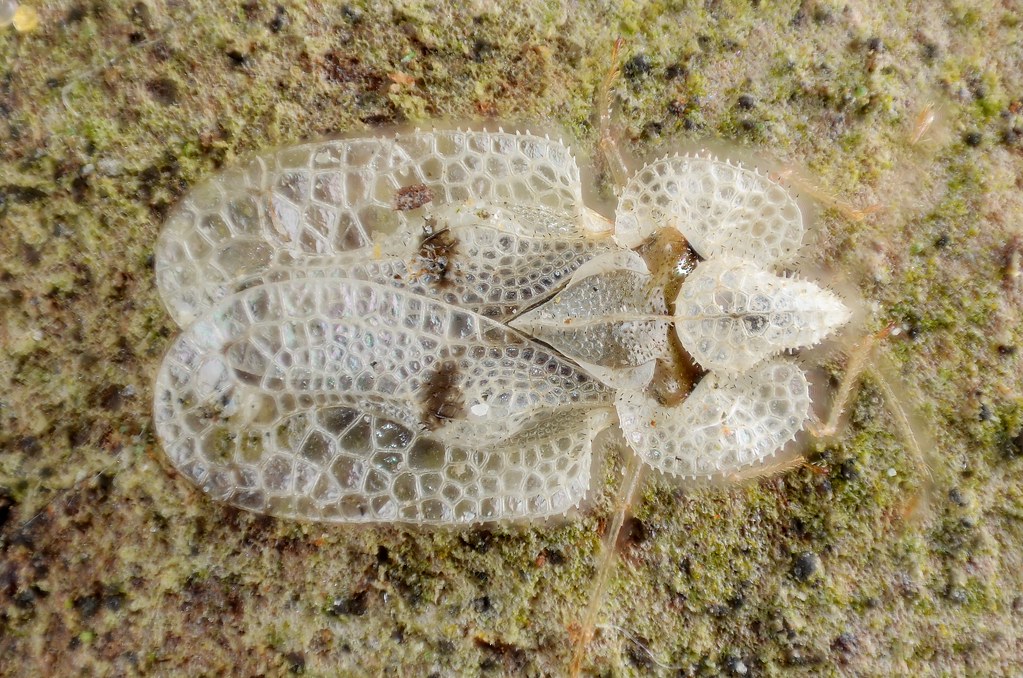
Lace bugs (Tingidae) have developed one of the most architecturally sophisticated egg-laying processes among all insects, creating elaborate protective structures for their offspring. Female lace bugs incorporate their own bodily secretions to construct complex protective structures around their eggs, essentially “building” miniature fortresses. These egg structures feature intricate patterns of hardened droplets that form defensive walls, often arranged in geometric patterns with small openings that allow air circulation while blocking predators and parasitoids. Some species take this protection further by incorporating their fecal matter, which contains chemical deterrents, into these structures or by creating chimney-like projections that release defensive compounds. Female lace bugs of many species remain with their eggs and early-stage nymphs, actively defending them against predators with coordinated movements of their bodies and wings to fend off threats—an unusual level of maternal care rarely seen in the insect world.
Conclusion

The insect world provides a stunning showcase of evolutionary creativity when it comes to reproduction. The unusual egg-laying strategies described above represent millions of years of adaptation to specific ecological niches and challenges. From manipulating plant growth and hijacking other insects as egg carriers, to precision surgical implantation and architectural egg protection, these strategies demonstrate how reproductive success drives some of the most unusual behaviors and anatomical specializations in nature. The remarkable adaptations remind us that in the competitive world of survival, the methods of bringing new life into the world can be just as extraordinary as the creatures themselves.

